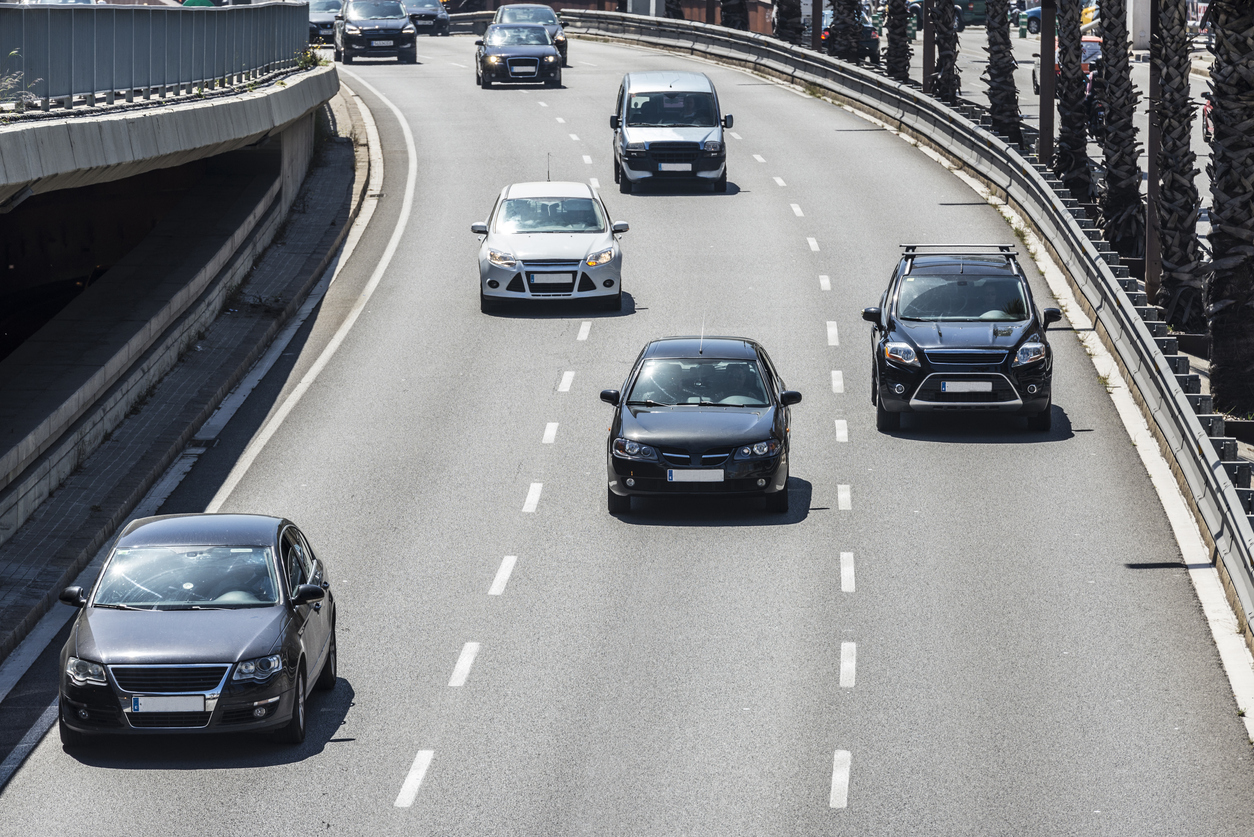Jill Kolodner | May 12, 2022 | Maryland Law

Maryland law does not allow lane splitting or lane filtering. These practices reduce the risk of rear-end collisions in slowed or stopped traffic. But they also come with risks of their own.
Learn about lane splitting and lane filtering and the legal statuses of these practices in Maryland.
Riding a Motorcycle in Maryland
Maryland does not have a great record for motorcycle safety. It has the fifteenth worst motorcycle accident fatality rate in the U.S.
Maryland has 6.6 motorcycle fatalities per 10,000 registered motorcycles. This is about 8% higher than the national average. Maryland also has a higher accident rate than neighboring West Virginia, Virginia, and Pennsylvania.
In Maryland’s heavy traffic, motorcycles have some distinct disadvantages compared to passenger vehicles, including:
- Less protection for riders
- Not as visible to drivers
- Inherently unstable
- Require greater skill to operate
On the other hand, motorcycles have greater maneuverability and take up less space than passenger vehicles. This allows motorcycles to use special maneuvers when moving through traffic.
Lane Splitting
Lane splitting happens when a motorcycle rides along the line that divides lanes. In the broadest definition, lane splitting can happen under any conditions. This includes normal travel on multi-lane highways and roads, as well as slowing or stopped traffic.
Maryland does not allow lane splitting. Under Maryland law, motorcycles cannot travel between lanes of traffic. Maryland does not even allow motorcycles to travel between rows of vehicles when parked. Instead, motorcycles must remain inside the same travel lanes used by vehicles.
Maryland’s legislature considered a bill to allow lane splitting, but it has not yet changed the law. The version considered by the Maryland legislature only allowed lane splitting in slow or stopped traffic. The law would still prohibit motorcycles from traveling along the lane lines to pass vehicles in normal traffic.
Lane splitting has two primary benefits. First, lane splitting allows motorcycles to reduce the risk of rear-end collisions in slowing or stopped traffic. Motorcycles avoid getting hit from behind by moving to the lane line, and passing stopped or slowing vehicles.
Second, lane splitting reduces intersection backups. When motorcycles move into the space between lanes, they free up space in the lanes for passenger vehicles. This does not reduce the number of vehicles on the road. But it does allow more vehicles to fit within a given space.
Conversely, lane splitting exposes motorcycles to blind spot accidents. Drivers already have a hard time spotting motorcycles in their blind spots. Allowing motorcycles to travel between lanes — where cars are not expecting to see them — puts motorcycles in danger of getting hit by vehicles changing lanes.
Lane Filtering
A maneuver similar to lane splitting is lane filtering. Many states that considered legalizing lane splitting instead legalized lane filtering. Lane filtering differs from lane splitting in one important respect. In lane filtering, motorcycles cannot travel on the lane lines. But they can travel between lanes to pass stopped vehicles.
Maryland law prohibits lane filtering. Even when passing stopped vehicles, motorcycles must occupy a lane and cannot travel between lanes. Unlike the lane splitting bill, Maryland’s legislature has not considered a bill legalizing lane filtering.
Lane filtering accomplishes the same goals as lane splitting. Motorcycles can move out of a travel lane to avoid a rear-end collision in stopped traffic. But by limiting the maneuver to passing, motorcycles do not have the same exposure to blind-spot accidents as in lane splitting.
Motorcycling Safely and Legally in Maryland
Maryland does not allow lane splitting or filtering. Maryland’s lawmakers still believe that riding or passing on the lane lanes creates more risk to motorcyclists than remaining in traffic lanes.
Following the law by remaining in the lanes will help you avoid lane splitting or filtering citations.
However, motorcyclists remain exposed to the risk of a rear-end collision. As you approach slowing or stopped traffic, slow down early. Make yourself visible to vehicles behind you and leave yourself an escape route if a vehicle comes up quickly behind you.
Contact the Baltimore Car Accident Law Firm of WGK Personal Injury Lawyers Today For Help
For more information contact the Baltimore car accident law firm of WGK Personal Injury Lawyers to schedule a free initial consultation.
WGK Personal Injury Lawyers
14 W Madison St, Baltimore, MD 21201, United States
(410) 837-2144
WGK Personal Injury Lawyers – Dundalk Office
